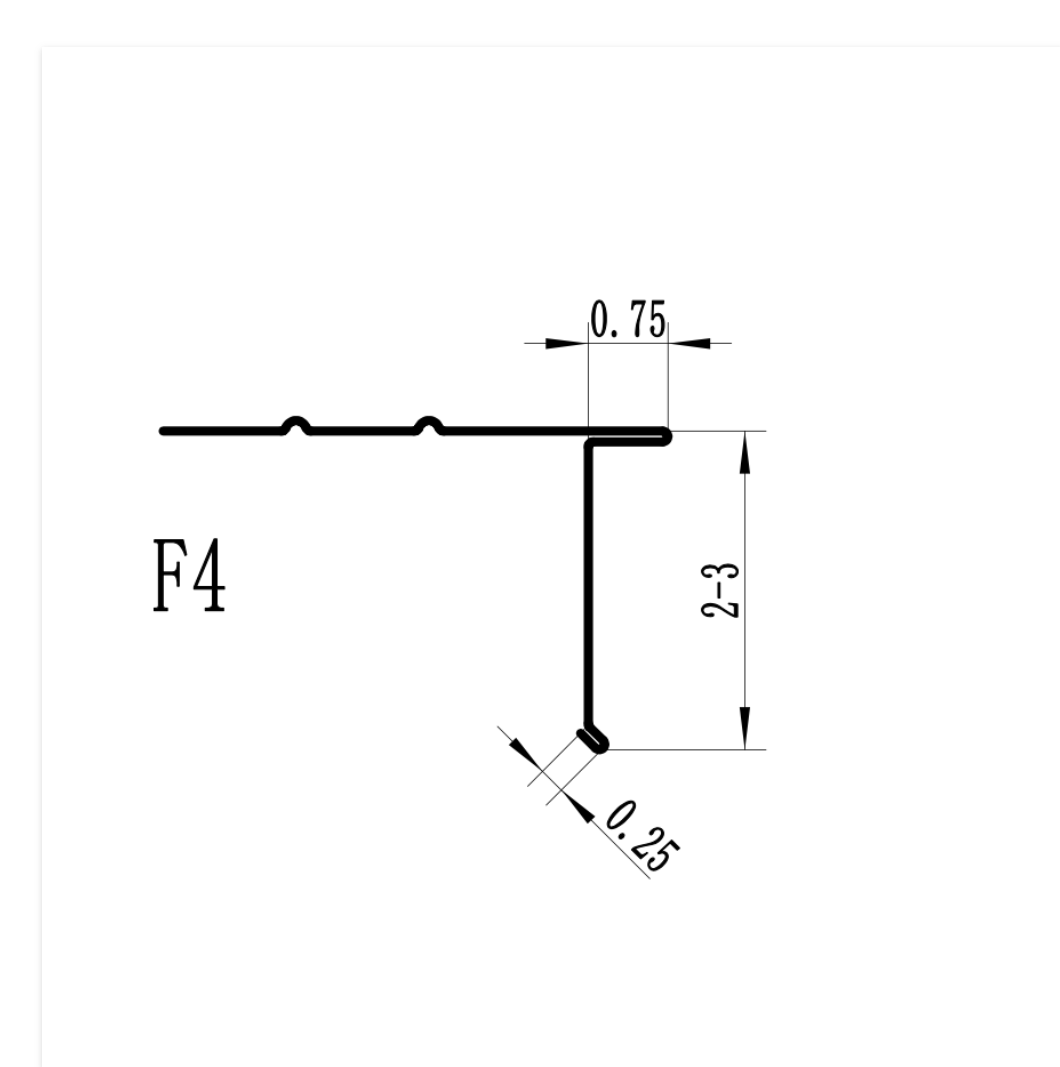
Posted on Tuesday, October 1, 2024
F4 Style Drip Edge Profile .png file | 593 KB
The F4 style drip edge profile is a common roofing accessory used to direct water away from the fascia and protect the roof's underlying structure from water damage. It typically has a wider face compared to standard drip edge profiles, offering greater protection.
In detail, the F4 style drip edge features:
This style is popular in residential roofing applications, particularly in regions prone to heavy rainfall or snow, where additional protection is required for water runoff.
An F4 roll forming machine is designed to produce F4-style drip edge profiles commonly used in roofing applications. These machines are typically highly specialized, allowing for precise shaping of metal coils into the desired F4 drip edge profile, with a wider face and a drip lip that directs water away from the fascia.
If you're considering purchasing an F4 drip edge roll forming machine, it would be ideal to explore options that offer fast changeover times, robust construction, and easy maintenance to keep up with production needs.

Most Popular Roll Forming Machines in the United Kingdom
Posted on Thursday, December 11, 2025
This blog breaks down the five most in-demand roll forming machines in the UK

Can I Finance a Roll Forming Machine?
Posted on Thursday, December 11, 2025
Financing a roll forming machine is easier than most buyers think. Here’s how leases, loans, and payment plans make production affordable.

Roll Forming Machines for Sale in the UK: What Buyers Need to Know Before Purchasing
Posted on Thursday, December 11, 2025
This complete guide explains everything UK buyers must know before purchasing, including machine types, voltage requirements, CE/UKCA compliance

Roll Forming Machines for Sale in the USA: What Buyers Need to Know Before Purchasing
Posted on Wednesday, December 10, 2025
This guide explains everything U.S. buyers need to know before purchasing a roll forming machine, including machine types, pricing, voltage
Copyright 2026 © Machine Matcher.